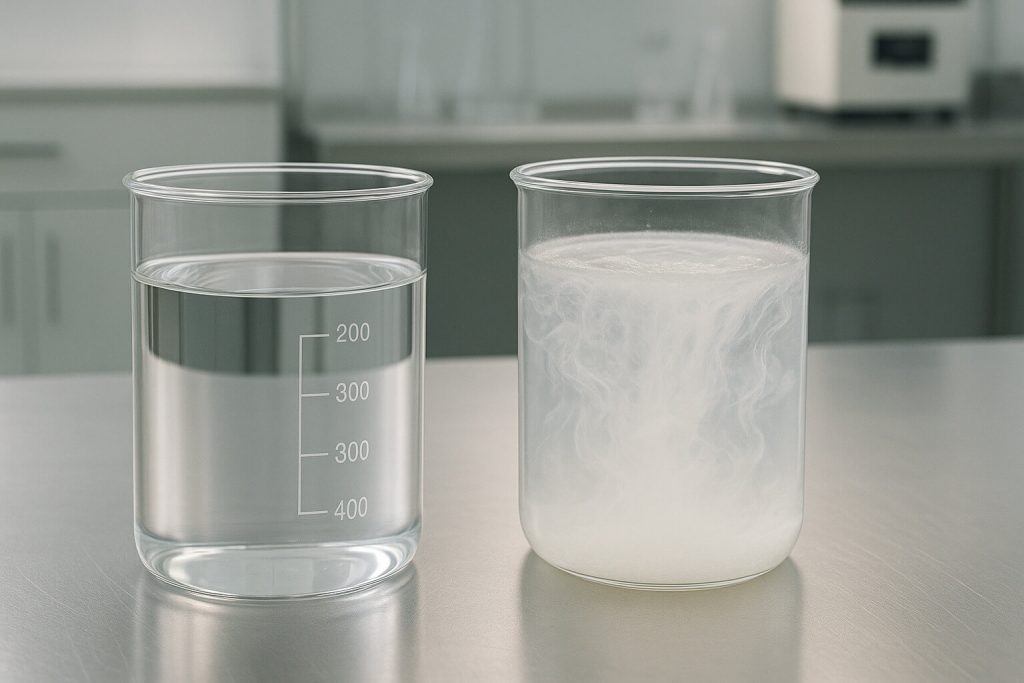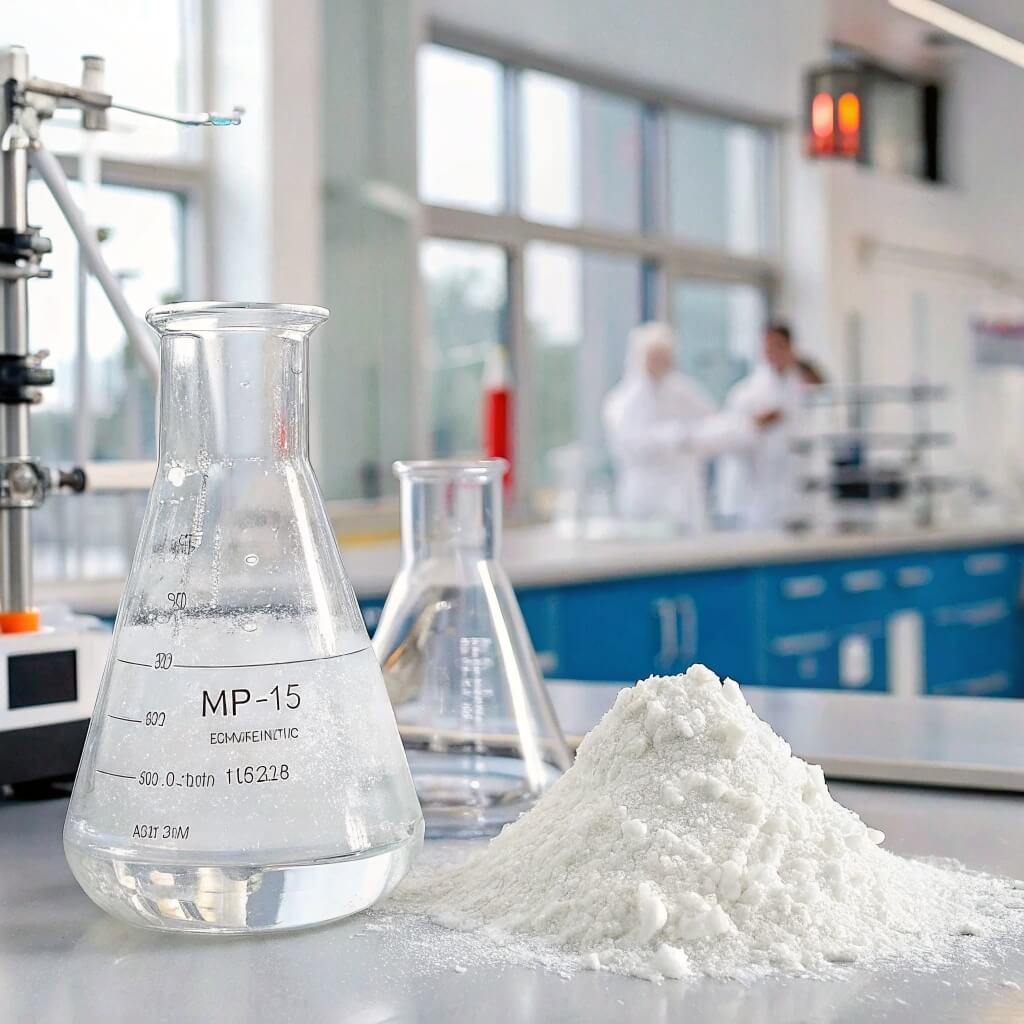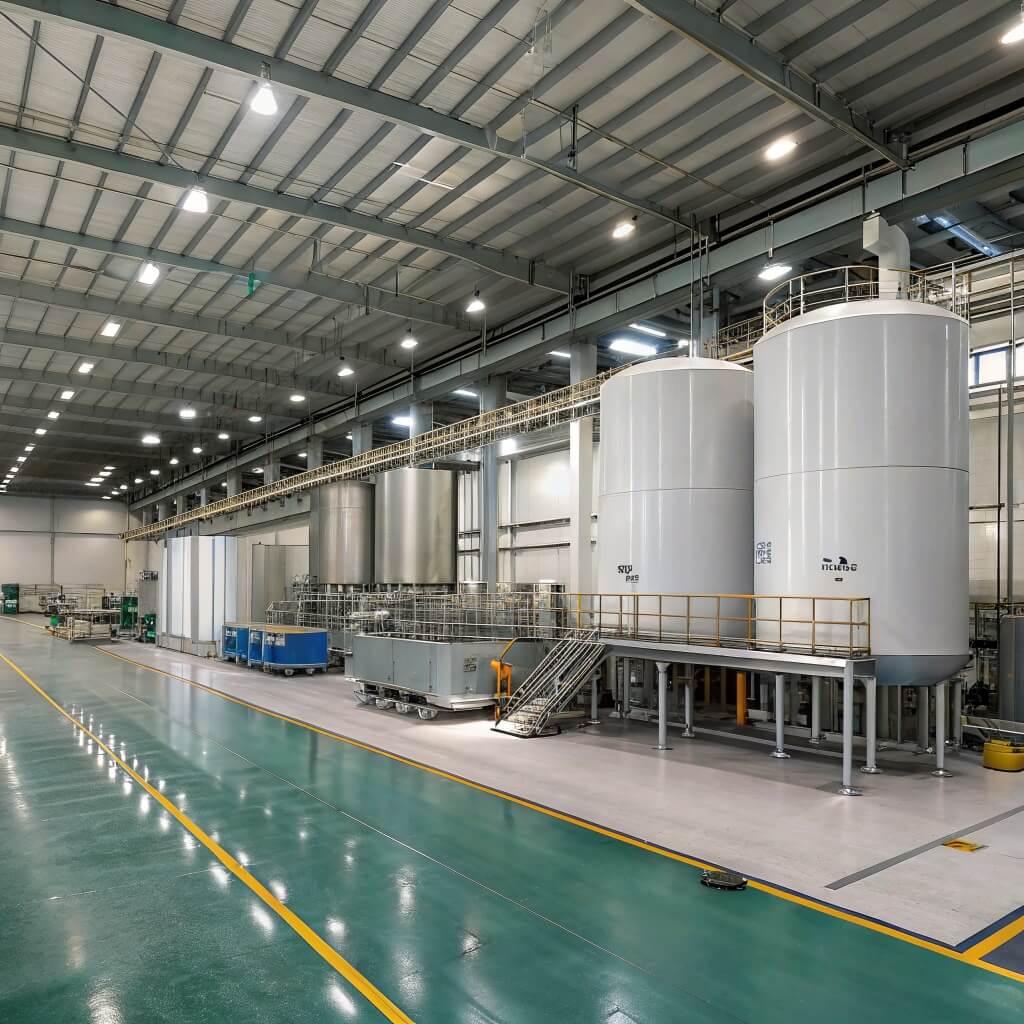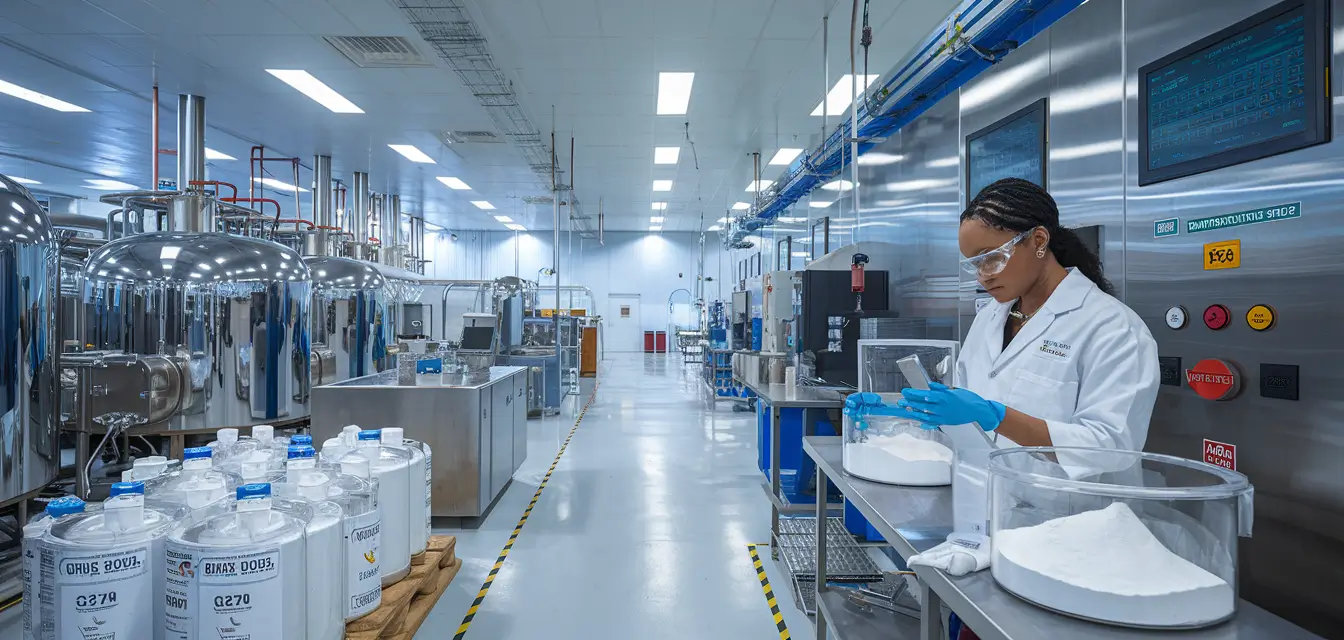Hydroxypropyl Methylcellulose (HPMC) is a widely used cellulose derivative with a variety of applications in different industries. From pharmaceuticals to construction and food production, HPMC plays an important role in improving product performance and efficiency. This article will explore the key uses of HPMC, the benefits it provides across different sectors, and why it is considered an essential ingredient in numerous industrial applications. By the end of this article, you will have a better understanding of how HPMC works and how its unique properties can benefit your business operations.

1. What is Hydroxypropyl Methylcellulose and How is it Made?
Hydroxypropyl Methylcellulose is a chemically modified form of cellulose, a natural polymer derived from plant fibers. To create HPMC, cellulose undergoes two main chemical modifications: etherification and hydroxypropylation. During etherification, cellulose reacts with methyl chloride to introduce methyl groups into its structure. In the hydroxypropylation step, propylene oxide is added to introduce hydroxypropyl groups. The degree of substitution of these groups determines the solubility, viscosity, and functionality of HPMC.
The versatility of HPMC is a direct result of the degree of modification. Manufacturers can control the properties of HPMC by adjusting the number of methyl and hydroxypropyl groups. This allows them to create customized versions of HPMC suitable for various applications. HPMC is typically available as a powder or granules and is soluble in water, making it easy to incorporate into formulations across different industries.
Why is this important? The precise formulation of HPMC ensures that it can meet the specific needs of diverse industries, from improving the texture of food products to enhancing the performance of construction materials. This flexibility is key to HPMC’s widespread use in so many sectors.
| Bestandteil | Role in HPMC Production | Function in Application |
|---|---|---|
| Cellulose | Base material | Forms the backbone of HPMC |
| Methylgruppen | Chemische Modifikation | Enhances water solubility |
| Hydroxypropylgruppen | Chemische Modifikation | Improves viscosity and solubility |
2. What Are the Primary Uses of Hydroxypropyl Methylcellulose in Construction?
Hydroxypropyl Methylcellulose plays a significant role in the construction industry, particularly in the formulation of dry mortars, tile adhesives, and other cement-based products. One of the most important properties of HPMC in construction is its ability to improve the workability of materials. For example, in tile adhesives, HPMC allows the adhesive to spread more easily and evenly, ensuring a smoother application.
Another crucial benefit of HPMC in construction is its ability to retain moisture. Mortars and adhesives containing HPMC have improved water retention properties, which helps to prevent premature drying. This is especially important in applications where the material must remain workable for an extended period, such as in large-scale construction projects. Additionally, HPMC’s ability to control the drying time can significantly reduce the risk of cracks or poor adhesion in finished materials.
So sieht der Deal aus: HPMC doesn’t just improve the ease of application; it also enhances the durability of construction materials. By improving adhesion, water retention, and viscosity, HPMC ensures that the final product performs optimally and lasts longer.
| Anwendung | Vorteile von HPMC | Key Impact |
|---|---|---|
| Fliesenkleber | Improved spreadability and adhesion | Easier application, stronger bond |
| Mortars | Enhanced moisture retention | Prevents premature drying and cracking |
| Cement-based Products | Increased workability and consistency | Better handling and stronger results |
3. How Does Hydroxypropyl Methylcellulose Benefit Pharmaceutical Products?
In the pharmaceutical industry, Hydroxypropyl Methylcellulose (HPMC) is primarily used as a binder, stabilizer, and controlled-release agent in the formulation of tablets, capsules, and other solid dosage forms. As a binder, HPMC helps hold the ingredients of tablets together, ensuring that the tablet remains intact during storage and consumption.
HPMC is also used for its ability to control the release rate of active pharmaceutical ingredients (APIs). It can be formulated to release the active ingredients over an extended period, allowing for a sustained or controlled release of the drug in the body. This makes HPMC an essential ingredient in the development of time-release and sustained-release medications, which provide therapeutic benefits over an extended period, reducing the need for frequent dosing.
You might be wondering why HPMC is so widely used in pharmaceuticals. The answer lies in its versatility and ability to meet the specific requirements of pharmaceutical formulations. It ensures stability, improves bioavailability, and provides a controlled release of medication, making it invaluable for both manufacturers and patients.
| Pharmaceutical Use | Rolle von HPMC | Vorteile von HPMC |
|---|---|---|
| Tablets | Binder and stabilizer | Ensures integrity and stability |
| Capsules | Controlled release agent | Delivers drug over a longer period |
| Liquid Medications | Film-forming agent | Protects and stabilizes active ingredients |
4. What Are the Key Applications of Hydroxypropyl Methylcellulose in the Food Industry?
In the food industry, Hydroxypropyl Methylcellulose is used for its ability to enhance texture, stability, and shelf life. One of the main applications of HPMC in food is as a thickening agent. In dairy products like ice cream and yogurt, HPMC helps improve the creaminess and smoothness of the texture while preventing the formation of ice crystals. This ensures a consistent mouthfeel and high-quality product.
HPMC is also commonly used in sauces, soups, and salad dressings to increase viscosity and provide a thicker, more stable consistency. In gluten-free products, it helps improve the structure and texture, mimicking the properties that gluten would typically provide. This makes gluten-free bread, pasta, and baked goods more appealing and easier to handle.
Here’s why this matters: HPMC allows food manufacturers to create high-quality products that meet the texture, consistency, and stability standards consumers expect. Whether it’s in dairy, sauces, or gluten-free foods, HPMC provides versatility and functionality, improving the overall quality of the final product.
| Anwendung | Rolle von HPMC | Vorteile von HPMC |
|---|---|---|
| Milchprodukte | Prevents ice crystals, improves creaminess | Enhances texture, prevents ice formation |
| Sauces and Dressings | Increases viscosity and stability | Ensures consistent texture and product stability |
| Glutenfreie Produkte | Improves structure and texture | Enhances texture and mouthfeel in gluten-free foods |
5. How Does Hydroxypropyl Methylcellulose Improve Personal Care and Cosmetic Products?
Hydroxypropyl Methylcellulose is widely used in personal care and cosmetic products due to its excellent ability to enhance texture, consistency, and stability. In lotions, creams, and gels, HPMC helps to maintain a smooth and uniform texture, preventing separation of ingredients. Its film-forming ability also contributes to the formation of protective layers on the skin, making it a key ingredient in moisturizing products.
HPMC’s thickening properties make it an ideal ingredient in products such as shampoos, conditioners, and body washes, where it improves product consistency and provides a rich, creamy texture. In cosmetics, it is used in formulations like mascara and eyeliner to improve spreadability and ensure that the product adheres well to the skin.
You might be curious about how HPMC affects the sensory experience of personal care products. The good news is that it enhances the product’s texture without affecting its fragrance or overall feel. This makes it a versatile and popular choice in a wide range of personal care formulations.
| Anwendung | Rolle von HPMC | Vorteile von HPMC |
|---|---|---|
| Lotions and Creams | Improves texture and stability | Enhances consistency and spreadability |
| Shampoos and Conditioners | Thickening agent | Improves product viscosity and application |
| Mascara and Eyeliner | Film-forming agent | Ensures smooth application and adhesion |
6. What Are the Benefits of Hydroxypropyl Methylcellulose in Agriculture?
In agriculture, Hydroxypropyl Methylcellulose is used primarily as a thickening agent and stabilizer in various agricultural products. It is often incorporated into fertilizers, pesticides, and herbicides to improve the consistency of these products, ensuring that they adhere better to plant surfaces and are distributed more evenly.
One of the key benefits of HPMC in agriculture is its ability to improve water retention in soil. When used in soil conditioners, HPMC helps the soil retain moisture, improving plant growth and reducing the need for frequent irrigation. This is particularly beneficial in areas where water conservation is crucial.
Here’s the bottom line: HPMC plays a valuable role in improving the effectiveness and sustainability of agricultural products, from fertilizers to soil conditioners. Its ability to enhance product consistency and water retention makes it an important tool for modern farming practices.
| Agricultural Application | Rolle von HPMC | Vorteile von HPMC |
|---|---|---|
| Fertilizers | Thickening agent | Enhances application and distribution |
| Pesticides and Herbicides | Improves adhesion | Increases efficiency and effectiveness |
| Soil Conditioners | Water retention agent | Improves moisture retention in soil |
7. How Does Hydroxypropyl Methylcellulose Improve Industrial Processes?
In industrial processes, Hydroxypropyl Methylcellulose (HPMC) is used to improve the viscosity and consistency of materials. It is commonly added to paints, coatings, and adhesives to enhance their performance. HPMC acts as a thickener, ensuring that these products maintain the correct consistency during application and remain stable over time.
In 3D printing, HPMC is used as a binder in the preparation of filaments and materials. It helps ensure the smooth extrusion of the material and improves the final quality of 3D-printed objects. By controlling viscosity and enhancing material properties, HPMC plays an important role in the advancement of industrial technologies.
Why is this significant? The ability of HPMC to improve the consistency and performance of industrial materials makes it a valuable ingredient across many sectors. Whether in coatings, adhesives, or 3D printing, HPMC enhances the functionality and reliability of products.
| Industrielle Nutzung | Rolle von HPMC | Vorteile von HPMC |
|---|---|---|
| Farben und Lacke | Thickening agent | Ensures smooth application and consistency |
| Adhesives | Improves viscosity and stability | Enhances adhesion and product performance |
| 3D Printing | Binder for filaments and materials | Improves extrusion and final product quality |
8. What Are the Environmental Benefits of Hydroxypropyl Methylcellulose?
Hydroxypropyl Methylcellulose is a sustainable and environmentally friendly material. Derived from cellulose, which is a renewable resource, HPMC is biodegradable, meaning it breaks down naturally over time without causing long-term environmental damage. Unlike synthetic polymers, HPMC poses a much lower environmental risk.
Additionally, the production of HPMC has a relatively low environmental impact compared to other chemical alternatives. Efforts to improve the sustainability of its production processes continue, with a focus on reducing energy consumption and minimizing waste. As industries increasingly focus on sustainability, HPMC’s eco-friendly nature makes it a preferred choice.
Here’s the takeaway: HPMC offers an environmentally conscious alternative to many synthetic materials, helping businesses reduce their environmental footprint while still achieving high-quality results.
| Environmental Aspect | Auswirkungen von HPMC | Sustainability Feature |
|---|---|---|
| Biologische Abbaubarkeit | Breaks down naturally in the environment | Low long-term environmental impact |
| Renewable Sourcing | Derived from plant cellulose | Supports sustainable production |
9. How Does Hydroxypropyl Methylcellulose Compare to Other Cellulose Derivatives?
Hydroxypropyl Methylcellulose stands out from other cellulose derivatives like methylcellulose and carboxymethylcellulose due to its unique balance of solubility and viscosity. Methylcellulose, for instance, is only soluble in hot water and lacks the thickening properties of HPMC. Carboxymethylcellulose, on the other hand, has high viscosity but doesn’t dissolve as easily in cold water.
Here’s the difference: HPMC provides a versatile and customizable solution for various industrial applications, offering both solubility and viscosity control. This makes it suitable for a wide range of products, from pharmaceuticals to construction materials.
| Cellulose Derivative | Löslichkeit | Viskosität | Common Uses |
|---|---|---|---|
| Hydroxypropylmethylcellulose | Soluble in cold water | Moderate to high | Pharmaceuticals, construction, food |
| Methylcellulose | Soluble in hot water | Low to moderate | Lebensmittel, Pharmazeutika |
| Carboxymethylcellulose | Soluble in water | Hoch | Food, cosmetics |
10. What Future Innovations Are Possible for Hydroxypropyl Methylcellulose?
The future of Hydroxypropyl Methylcellulose looks promising, with ongoing innovations focused on enhancing its performance and expanding its applications. One area of research is the development of more sustainable production methods, which will reduce the environmental footprint of HPMC production. Additionally, HPMC’s versatility means that new applications are continually being explored, particularly in the field of biodegradable packaging and advanced manufacturing techniques.
The bottom line: HPMC’s unique properties ensure its continued relevance in emerging industries. With sustainability at the forefront, the future holds many exciting possibilities for HPMC as industries seek more eco-friendly and efficient solutions.
| Area of Innovation | Potential Impact | Future Application |
|---|---|---|
| Nachhaltige Produktion | Reduced environmental impact | More eco-friendly products |
| Advanced Manufacturing | Improved properties in new materials | Biodegradable packaging, 3D printing |
Häufig gestellte Fragen
Q1: Was ist Hydroxypropylmethylcellulose?
Hydroxypropyl Methylcellulose (HPMC) is a cellulose derivative used in various industries for its ability to modify viscosity, improve texture, and retain water.
Q2: How does Hydroxypropyl Methylcellulose benefit construction materials?
HPMC enhances workability, adhesion, and moisture retention in construction products like mortars and adhesives, leading to stronger and more durable results.
Q3: How is Hydroxypropyl Methylcellulose used in food products?
HPMC is used to improve texture, consistency, and stability in food products, including dairy, sauces, and gluten-free items.
Q4: What are the environmental benefits of Hydroxypropyl Methylcellulose?
HPMC is biodegradable, made from renewable cellulose, and is a more sustainable alternative to synthetic materials in various industrial applications.
Q5: How does Hydroxypropyl Methylcellulose contribute to drug delivery systems?
HPMC is used in drug formulations for controlled and sustained release, enhancing bioavailability and improving the effectiveness of medications.




